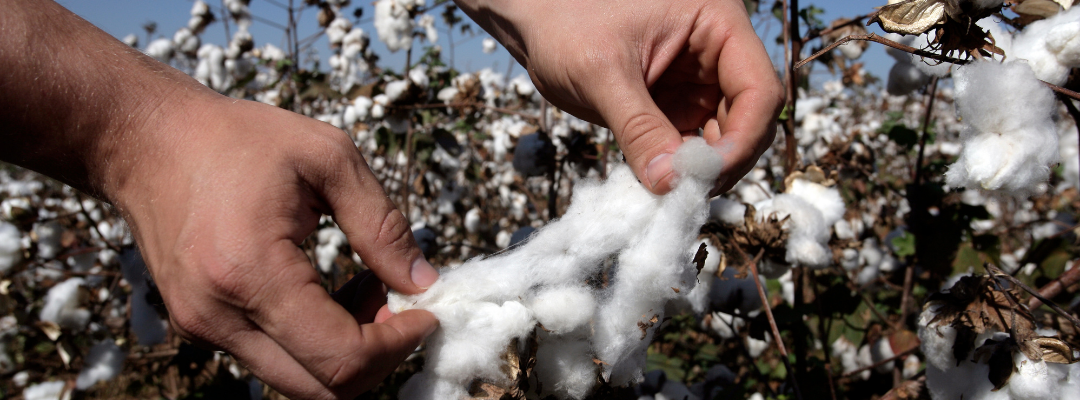Updated February 8, 2024
Navigating crop insurance for upland cotton can be complex, with various options and critical timelines. Our previous Southern Ag Today article discusses crop insurance policies available for upland cotton (Chong, Liu, and Biram, 2023). This article highlights essential dates for upland cotton producers to track to ensure effective management and protection of their investments.
Securing federal crop insurance coverage relies on adhering to critical timelines and dates associated with these policies. Keeping track of these important dates can be challenging for producers since different crops have different decision deadlines. Among the crucial dates, producers must carefully track the sales closing date and the cancellation date for effective management. The Sales Closing Date is the last date to apply for or change crop insurance coverage from the previous year. Producers are expected to decide by this date on the type of policy and the level of protection. The Cancellation Date is the last date for producers to inform the insurance company if they do not want to renew their crop insurance for next year. Otherwise, their insurance policy will automatically renew for another year.
For upland cotton, the U.S. Department of Agriculture Risk Management Agency (USDA RMA) has released important dates regarding the sales closing and cancellation dates for crop insurance. The sales closing date and cancelation and termination date are the same date for all counties for cotton, and they are also the same date among the different crop insurance policies available for upland cotton (see our previous Southern Ag Today article for a detailed discussion of the insurance policies available for upland cotton). Notably, these dates remain consistent annually but vary according to state and location, as detailed in Figure 1 and Table 1. Texas has been separated into three regions, each with a different date for sales closing dates and cancellation dates. For all the other states, the same dates apply to different counties in the state.
Producers can find these specific dates in their county through the USDA RMA Actuarial Information Browser and contact a crop insurance agent (see Agent Locator Tool offered by the U.S. Department of Agriculture Risk Management Agency) for more information regarding specific questions.
Figure 1. Regional Differences in Cotton Crop Insurance Policies’ Sales Closing Dates and Cancelation and Termination Dates

Table 1. Cotton Crop Insurance Policies’ Sales Closing Dates and Cancellation and Termination Dates by State and County
| State and County | Dates |
| Val Verde, Edwards, Kerr, Kendall, Bexar, Wilson, Karnes, Goliad, Victoria, and Jackson Counties, Texas, and all Texas counties lying south thereof. | Jan 31 |
| Alabama; Arizona; Arkansas; California; Florida; Georgia; Louisiana; Mississippi; Nevada; North Carolina; South Carolina; El Paso, Hudspeth, Culberson, Reeves, Loving, Winkler, Ector, Upton, Reagan, Sterling, Coke, Tom Green, Concho, McCulloch, San Saba, Mills, Hamilton, Bosque, Johnson, Tarrant, Wise, and Cooke Counties, Texas, and all Texas counties lying south and east thereof to and including Terrell, Crocket, Sutton, Kimble, Gillespie, Blanco, Comal, Guadalupe, Gonzales, De Witt, Lavaca, Colorado, Wharton, and Matagorda Counties, Texas. | Feb 28 |
| All other Texas counties and all other states. | Mar 15 |
Source: Summary of Changes for the Cotton Crop Provisions (17-0021), U.S. Department of Agriculture
References:
Chong, Fayu, Yangxuan Liu, and Hunter Biram. “Exploring Diverse Crop Insurance Options for Cotton Producers.” Southern Ag Today 3(51.3). December 20, 2023. Permalink
U.S. Department of Agriculture, Summary of Changes for the Cotton Crop Provisions (17-0021), November 2016. https://legacy.rma.usda.gov/policies/2017/17-0021.pdf
Liu, Yangxuan, Hunter Biram, and Fayu Chong. “Cotton Crop Insurance: Regional Differences in Sales Closing Dates and Cancellation Dates.” Southern Ag Today 4(3.3). January 17, 2024. Permalink



